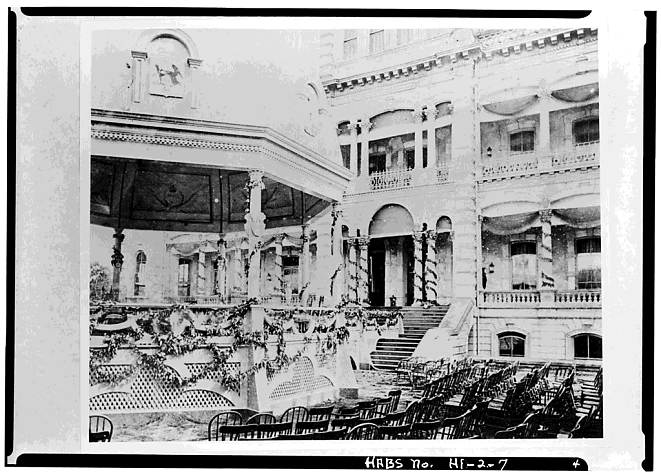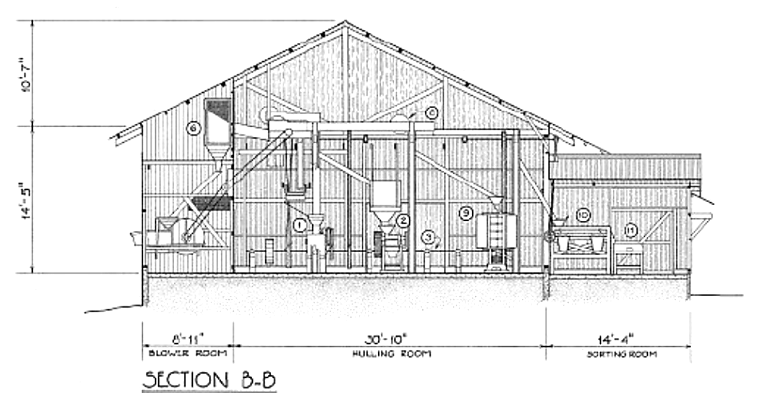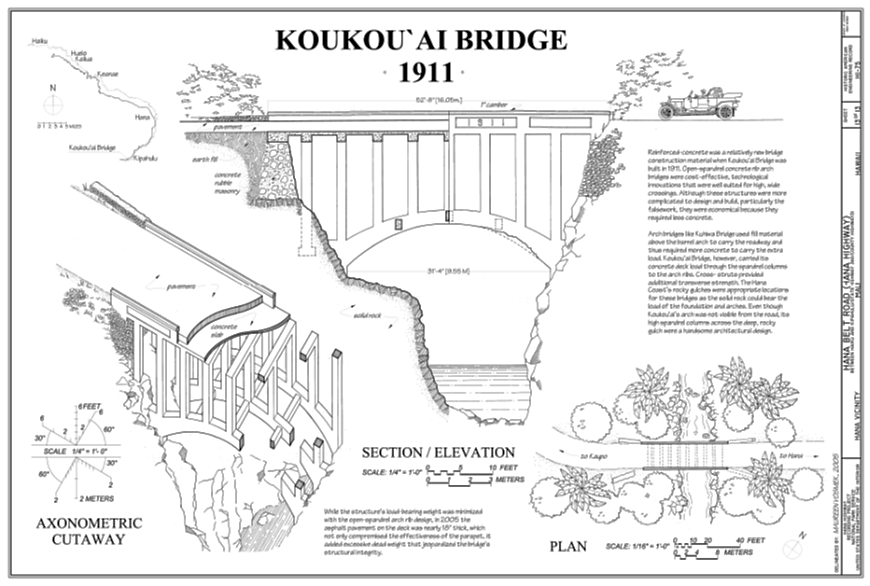By Virginia Murison, AIA, Consulting Preservation Architect
HABS’ ORIGINS

The Iolani Bandstand was erected in front of the ‘Iolani Palace in 1883 as a pavilion for coronation of King Kalakaua (1883 Photo). It was later moved to its current location.
Begun in 1933, the Historic American Buildings Survey (HABS) was the nation’s first documentation program of America’s architectural heritage. The initial legislation stated that, “A comprehensive and continuous national survey is the logical concern of the Federal Government.” As a national survey, the HABS collection is intended to represent “a complete resume of the builder’s art.” Thus, the building selection ranges in type and style from the monumental and architect-designed to the utilitarian and vernacular, including a sampling of a vast array of regionally and ethnically derived building traditions.
COUNTERPARTS TO HABS THAT WERE ADDED LATER INCLUDE:
HAER: The Historic American Engineering Record established in 1969 as a companion program to HABS that would record historic engineering and industrial sites.
HALS: The National Park Service permanently established the Historic American Landscapes Survey (HALS) program in 2000 for the systematic documentation of historic landscapes.
PURPOSE:
The HABS program was set up by Congress to perform several functions:
- Document the rapidly disappearing body of buildings constructed before 1860 (an initial requirement which has since been expanded to any historic era);
- Provide work during the Great Depression for qualified unemployed architects, photographers, and historians;
- Provide information on structures subsequently lost for academic study; and
- Serve as insurance for a significant structure, so it could be rebuilt in the case of a catastrophic loss.
Gradually the program transitioned into summer work projects for students overseen by qualified architects and related professionals.
COMPONENTS:
Following Standards established by the Department of the Interior HABS recording combines drawings, history, and photography to produce a comprehensive, interdisciplinary record. The documentation ranges in scope depending largely upon the level of significance and complexity of the site. It should first and foremost convey what is most important about that particular structure.
- The drawings component generally includes floor plans, elevations, architectural details, and construction elements;
- The written history follows an outline format that begins with a statement of significance supported by the development of the architectural and historical context in which the structure was built and subsequently evolved; and
- The large-format, black-and-white photographs record the environmental setting, elevations, and significant details, both inside and out.
The documentation is executed to archival standards on media expected to last as a permanent record for 500 years in the Library of Congress.
Users include elementary school geography students, family genealogists, and contemporary architects. Hollywood producers use HABS to define and convey a sense of period authenticity and visual character. Restoration architects use HABS’ precisely measured drawings and evocative, detailed photographs to save endangered national treasures.

HABS report Haraguchi Rice Mill, Hanalei, Kaua‘i County, HI
For example, the Haraguchi Rice Mill, the last fully-operating mill in the Hanalei Valley, ceased operation in 1960. Flattened by Hurricane Iwa in 1982, the mill was reconstructed following the documentation in HAER Hi-3 and today illustrates historic rice milling technology.
The Iolani Bandstand was erected in front of the ‘Iolani Palace in 1883 as a pavilion for coronation of King Kalakaua (1883 Photo). It was later moved to its current location.
The Historic American Buildings Survey, Historic American Engineering Record, and Historic American Landscapes Survey are copyright-free, contain useful data and beautiful art, are added to quarterly, and are accessible online at the Library of Congress website and in its Prints & Photographs Division Reading Room.
Source: https://www.nps.gov/hdp/habs/index.htm

HABS photos may include events, such as this one of Civilian Conservation Corps enrollers marching in the Kamehameha Day Parade in Hilo, Hawai‘i island circa 1934.
Images:
At top: Drawing of Koukouai Bridge from HAER No. HI-75 Hana Belt Road
https://www.loc.gov/pictures/item/hi0808.sheet.00013a/resource
Iolani Bandstand Coronation Pavilion, HABS HI-2 https://www.loc.gov/resource/hhh.hi0045.photos/?sp=7
Haraguchi Rich Mill, Survey HAER HI-3 https://www.loc.gov/resource/hhh.hi0055.sheet/?sp=4
Kamehameha Day Parade photo from Superintendent’s Monthly Report, June 1934 in Survey HAER HI-47 Hawai‘i Volcanoes National Park Roads https://www.loc.gov/resource/hhh.hi0541.photos/?sp=2


